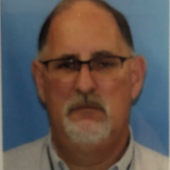Agenda
Please note times are in Greenwich Mean Time (GMT) and to view in your local time, please click here.
-
Welcome and introduction by the moderator
- Session 1: Recent global developments
-
PFAS regulatory updates at the global level
- Addition of PFHxS to the Stockholm Convention
- Assessment of the long-chain PFCAs at the Stockholm POPs Review Committee
- Latest developments under the Basel Convention and Rotterdam Convention
-
Regional overviews
-
Regulatory focus
- Europe
- The Americas, including Canada and Brazil
- Asia Pacific
-
and co-presenter
-
PFAS in your operations: key considerations and legislative updates for manufacturers
- Emissions pathways
- EU and US regulatory insights
- Industry considerations
-
Challenges with the UPFAS restriction from the automotive sector
- Context and regulation schedule
- European automotive industry response to the public consultation: Impacts of the derogations, requested timings from the automobile industry
- Resilience approach: Start preparing right now with the whole supply chain and identify where PFAS are
-
Q&A and panel
-
Refreshment break
- Session 2: Recent European developments
-
Best available techniques reference documents: their contribution on the use/emissions of less hazardous substances, PFAS as a case example
- General procedure to derive best available techniques for associated emission levels
- Work program
- Case example of PFAS in different industrial sectors
-
EU updates: The bridge between the universal restriction proposal and solution providers
- Policy developments
- What companies are doing?
- Where they are struggling?
- Emerging solutions
-
Challenges and opportunities for the electro and digital industry in responding to PFAS regulations
- At a glance…
- The German electro and digital industry association (ZVEI) assessment of the UPFAS restriction proposal and key demands
- PFAS and other chemicals in the electro and digital industry
- challenges
- opportunities
- PFAS-containing technologies for the EU's path to a climate-neutral society based on the European Green Deal, by ZVEI, VDA and VDMA
- Selected examples of PFAS applications in the electro and digital industry
 Kirsten Metz
Senior Manager Chemicals and Environmental Policy, German Electro and Digital Industry Association (ZVEI)
Kirsten Metz
Senior Manager Chemicals and Environmental Policy, German Electro and Digital Industry Association (ZVEI) -
Q&A and panel
-
Lunch
-
Enhesa Product service presentation and platform demo
- Session 3: Key debates at the science-policy interface
-
Moderator
-
Should regulators differentiate between fluoropolymers and other PFAS?
- What is a PFAS/fluoropolymer?
- What are the sources?
- Health effects – animals and people
- Remediation
 Linda Birnbaum
Scientist Emeritus and Former Director; Scholar in Residence, National Institute of Environmental Health Sciences (NIEHS) and National Toxicology Program (NTP); Duke University
Linda Birnbaum
Scientist Emeritus and Former Director; Scholar in Residence, National Institute of Environmental Health Sciences (NIEHS) and National Toxicology Program (NTP); Duke University -
PFAS in drinking water: Challenges and opportunities
- Overview of PFAS contamination of drinking water sources
- Current approaches to the management of PFAS contamination by water utilities
- Challenges to investment and funding for water treatment infrastructure
-
Evidence of why a class-based approach must be used to restrict PFAS globally
- PFAS are released at all stages of the lifecycle of PFAS-containing products
- Case study: PFAS in the textile lifecycle
- PFAS listed under the Stockholm Convention and new PFAS detected in studies
- Need for compliance and prevention of regrettable substitution
-
The listing of a PFAS category under the Toxics Use Reduction Act (TURA)
- Summary of the science we reviewed to justify a category
- What we have learned from early filers
- How we connect filers to research resources for alternatives
- Overall lessons learned from this policy action
-
Q&A and panel
-
Alternatives panel moderator
-
Alternatives panel: How to accelerate the transition to PFAS free chemistry in sectors where it’s harder to substitute
- Who do you need at the table to develop PFAS alternatives in your sector?
- What were the performance characteristics of the PFAS to be substituted?
- What key milestones must you achieve to support the adoption of your PFAS-free technology?
- What sort of support – capital, regulatory, industry –would you need to see a full transition away from the current PFAS chemistry?
Panelists:
-
Refreshment break
- Session 4: Recent North American developments
-
Recent PFAS-related activities under TSCA and EPA updates on newly issued PFAS test orders
- Background information
- Agency-level accomplishments
- Definition
- Rulemaking and related regulatory activities
- National testing strategy
- Packaging issues
 Jeffrey L Dawson
Senior Science Adviser, Office of Chemical Safety and Pollution Prevention (OCSPP), US EPA
Jeffrey L Dawson
Senior Science Adviser, Office of Chemical Safety and Pollution Prevention (OCSPP), US EPA -
State level developments in Washington: Cycle 1.5 updates
- Pollution prevention and PFAS
- Regulatory programs for PFAS in consumer products in Washington
- Current regulations on PFAS in consumer products in Washington
- Future actions and how to stay informed
-
State-level developments in Minnesota: Amara’s law
- Minnesota is prioritising PFAS pollution prevention
- Amara’s law phases out avoidable PFAS use in the state by 2032
- Implementation will include rulemakings with important opportunities for public comment
-
PFAS: Regulatory update in Canada
- How PFAS are defined
- Issues surrounding the substances
- Status of the regulations in Canada
-
Q&A and panel
Joined by
.jpg) Ryan Schmit
Senior Advisor, Office of Chemical Safety and Pollution Prevention, United States Environmental Protection Agency
Ryan Schmit
Senior Advisor, Office of Chemical Safety and Pollution Prevention, United States Environmental Protection Agency -
End of conference


.jpg)


.png)



.jpg)



.jpg)

.jpg)

